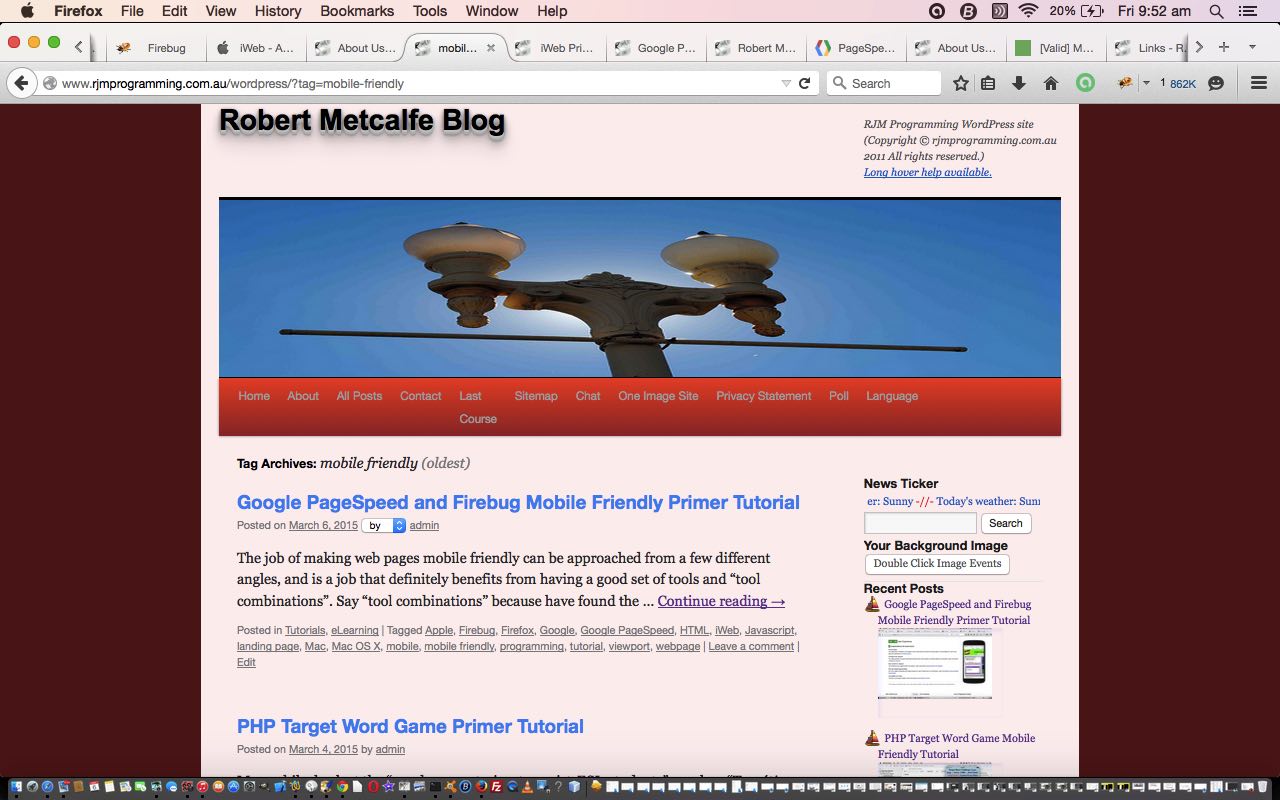When you are blogging sometimes you go along from day to day using a phrase that is part of society’s general discourse, and so sometimes you tend not to see that phrase as a candidate for a “tag” item for your (WordPress) blog. The “(WordPress)” is there because most blogging systems have the concept of a “tag”, as a cue to the major search engines like Google, Yahoo, Bing that this “tag” is a linkable concept of relevance to your blog. As such, if you have overlooked a significant phrase that people use a lot in their general conversation, and is very relevant to your blog, you should really get it into your “tag” list (as much as anything because if you use this phrase it is quite likely other users will also use this phrase when they are surfing the web using a search engine to find information that may lead to your blog posting). In addition, to link via a tag is much quicker for the user to perform, than to search for a phrase (or single word) using the WordPress blog search functionality. This is just about always true, because the use of a “tag” is a way to use “business logic” to your advantage, and is a way to say this “tag” means something specific here at this blog, because behind the scenes your “tag” is put into a specific “tag” list specifically relevant to your blog … just what the search engines are looking for (from you (and your blog)). Am no SEO “artist” … doh … but know these pretty simple principles will always stand you in good stead with the major search engines, which are very concerned about content “relevance”, as they would be with the huge amounts of data they are now contending with.
Today a lightbulb switched on for me regarding this with the phrase “mobile friendly”. So, what could be the mechanics for going about, in a systematic way, on this WordPress blog to identify and update relevant blog postings for the “tag” “mobile friendly” on this blog, after the event? That is where a well considered “search” should be made of this phrase, and because it is a phrase, place that WordPress search in double quotes. As with my students when explaining the beneficial effects of encasing a search phrase in double quotes when searching in a search engine for a phrase (ie. “surfing the net”), so it is, here, too, with WordPress blogs. You’d expect that.
So once that WordPress “search” blog post listing is achieved it is pretty easy, after having arranged previously to be logged in as the WordPress blog administrator user, to go through each blog posting (and I prefer to work from the last one to the first … for some reason … just like the way the Weet Bix have to be slightly moist but not overmoist, prior to eating), using the (administrator’s) “Edit” link, adding “mobile friendly” to the “tag” list, and clicking the “Update” button, to commit the change to the WordPress database, the mechanics of which you can see here. By the time this work finishes you can search this WordPress blog with the “tag” search URL HTTP://www.rjmprogramming.com.au/wordpress/?tag=mobile-friendly (note how all lowercase and a space is replaced by a minus sign). If you want to read more about URLs and what goes to make them up and about URL structure optimization you should read URL Structure SEO: A Small [But Critical] Step to Making Your Rankings POP!
Wow, so long since we’ve touched base about databases! …
Did you know?
WordPress blog websites use PHP as their primary language of use, and use MySql as their database of use. There was an occasion, the specifics of the memory of which I’ll dredge up and tell you about another day, where a change to MySql queries was required for something I needed to do on this WordPress blog. What bit of code ended up being the one to look into (and hence, is a great place to look to improve your “engine room” “back-end” understanding of a WordPress Blog (with the theme TwentyTen) structure and workings)? …
./wp-includes/query.php
And then … am pretty sure you can guess?
WordPress blogs (also) have a concept (sort of) “above” the “tag” concept which is the posting’s “category” list, which you can see in action over to your right … just move the onions … there. The “category” concept is another good way to flag the “business logic” aims of your blog, and really equates to the “subject matter” headings of that blog posting (you can have several, as you’d expect). Other terms, relevant to SEO (and CMS), out there in blogging “land” are “permalink” and “slug” … no, not the snail coming out of its shell … chortle, chortle … but … well … “read all about it”. In practice, I find that a new “category” comes along once in a blue moon but a new “tag” comes along quite regularly … depends how you “sausage roll” … chortle, chortle.
If this was interesting you may be interested in this too.



